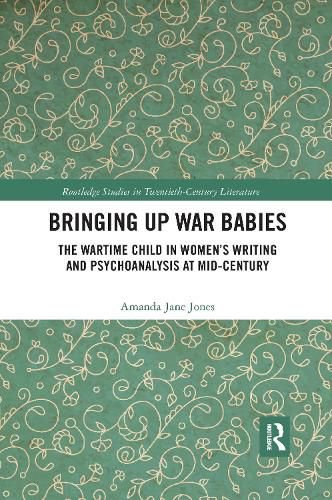Readings Newsletter
Become a Readings Member to make your shopping experience even easier.
Sign in or sign up for free!
You’re not far away from qualifying for FREE standard shipping within Australia
You’ve qualified for FREE standard shipping within Australia
The cart is loading…






The figure of the wartime child in the mid-twentieth century unsettles and disturbs. This book employs a range of material - biographical, literary and historical - to chart some of the surprising and unanticipated crossovers between women’s writing and early psychoanalysis in the years of the Second World War and the decades before and after. This volume includes examples of children’s adventure fiction, as well as works written for adult audiences and important and previously unrecognized similarities are noted.
The war was a disruptive influence in the lives of all who lived through it. Although active self-censorship is observed in the behaviour and attitudes of adults at this time, this book demonstrates how fictional children are able to articulate feelings such as anxiety and fear that adults were under pressure to conceal or to repress and at times, the figure of the wartime child becomes a surrogate for the writer herself or her suppressed fears and anxiety. When peace returned, this study finds women writers quick to identify and communicate a discomfiting new ambivalence between parents and children.
$9.00 standard shipping within Australia
FREE standard shipping within Australia for orders over $100.00
Express & International shipping calculated at checkout
The figure of the wartime child in the mid-twentieth century unsettles and disturbs. This book employs a range of material - biographical, literary and historical - to chart some of the surprising and unanticipated crossovers between women’s writing and early psychoanalysis in the years of the Second World War and the decades before and after. This volume includes examples of children’s adventure fiction, as well as works written for adult audiences and important and previously unrecognized similarities are noted.
The war was a disruptive influence in the lives of all who lived through it. Although active self-censorship is observed in the behaviour and attitudes of adults at this time, this book demonstrates how fictional children are able to articulate feelings such as anxiety and fear that adults were under pressure to conceal or to repress and at times, the figure of the wartime child becomes a surrogate for the writer herself or her suppressed fears and anxiety. When peace returned, this study finds women writers quick to identify and communicate a discomfiting new ambivalence between parents and children.